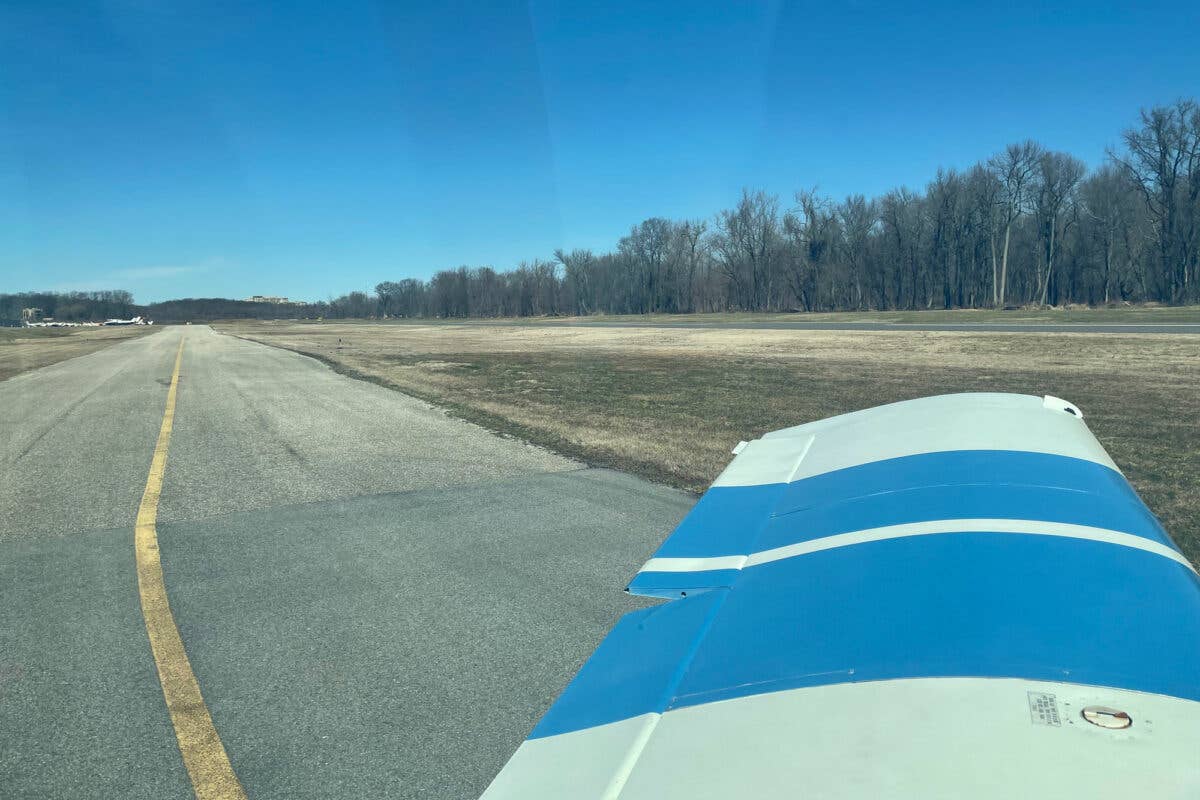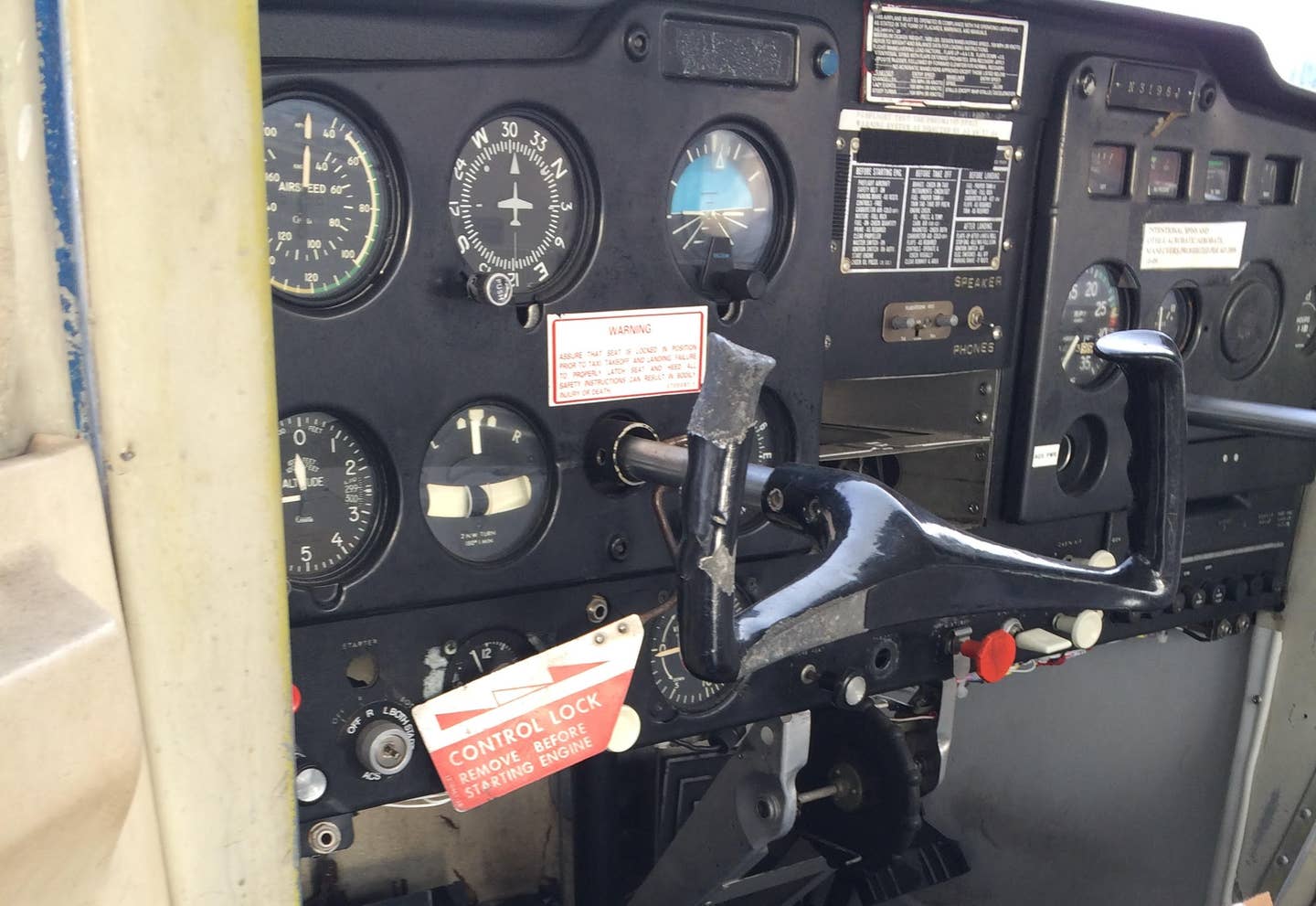Operations at Nontowered Airports Can Be Tricky
A new FAA AC cautions against performing a straight-in approach to a nontowered airport when there are other aircraft in the pattern.

There are nearly 20,000 nontowered airports in the U.S. [Credit: Julie Boatman]
One of the first surprises for many people learning to fly is that not every airport has a control tower. In fact, the majority of them don't.
The FAA recognizes this and has released a new advisory circular (AC) covering nontowered airport operations. While ACs are not regulatory in nature, they offer guidance for best practices. Much of the information should be a review for most pilots, as it is also covered in The Pilot's Handbook of Aeronautical Knowledge and Chapter 4 of the Aeronautical Information Manual (AIM).
However, the Advisory Circular AC 90-66C, released last week, is a must-read for flight instructors and pilots who operate at one of the 20,000 nontowered facilities in the U.S.
Nix the Straight-In Approach
One of the areas that is emphasized in the AC is a caution against performing a straight-in approach to a nontowered airport when there are other aircraft in the pattern. This practice deprives the pilot doing the straight-in the opportunity to ascertain the location of other aircraft that may be in the pattern. This type of approach can also put a pilot behind their aircraft as they lack the situational cues used to mark the configuration process, such as reducing the throttle and lowering landing gear and flaps.
The AC suggests that flying a straight-in might increase the possibility of a midair collision. One of the most violent and recent midairs at a nontowered airport occurred in Watsonville, California, on August 18, 2022. A Cessna 340A attempted a straight-in approach and collided with a Cessna 152 that was flying the pattern. The 340 is a twin nearly twice as large and twice as fast as the 152.
According to the preliminary National Transportation Safety Board report, the accident happened when both aircraft were on approach to Runway 20 at Watsonville Municipal Airport (KWVI) just before 3 p.m. The pilots were in communication with each other using the airport's common traffic advisory frequency (CTAF) prior to impact. Both pilots stated their intentions to land at KWVI. Investigators noted the ADS-B record shows the 340 approaching the airport at approximately 180 knots. The normal flap extension speed for the aircraft is 160 knots, and the landing gear extension is 140 knots, so it is unclear if the aircraft was actually configured for landing at the time of the accident.
The 152 was ahead of the 340. In his last transmission, the pilot of the 152 noted the larger, faster airplane was closing on him and announced intentions to go around. The pilot of the 340 indicated he was looking for the 152.
One of the witnesses to the accident said the 340 appeared to roll right at the last second to avoid the 152, but it was too little, too late, and the aircraft wings collided. Carl Kruppa, 75, and Nannette Plett-Kruppa, 67, from Winton, California, and their dog were aboard the 340. Stuart Camenson, 32, from Santa Cruz was piloting the 152. All were killed in the crash.
Traffic Pattern Operations
Your CFI will tell you to keep your head on a swivel and self-announce your positions and actions in the pattern.
The AC notes: "All traffic, whether IFR or VFR, should, at a minimum, monitor the CTAF. For departures a minimum of 10 minutes prior to taxi and arrivals a minimum of 10 miles out from the airport, you should broadcast your intentions. The importance of air-to-air communications cannot be overemphasized. Failure to follow this communication protocol has contributed to near midair collisions (NMAC), and as such could be considered careless and reckless operation of an aircraft."
It is frightening to have a close encounter when the other aircraft is not talking to you or does not appear to have seen you before you took evasive action to avoid a midair in the pattern. One of the chilling factors of the Watsonville accident is that both pilots were in communication with each other and self announcing, yet the accident still happened.
The AC stresses "the FAA does not regulate traffic pattern entry, only traffic pattern flow. This means that when entering the traffic pattern at an airport without an operating control tower, inbound pilots are expected to observe other aircraft already in the pattern and to conform to the traffic pattern in use. If there are no other aircraft present, the pilot should check traffic
indicators on the ground and wind indicators to determine which runway and traffic
pattern direction to use."
The AC reminds us that proper entry into the pattern, including altitude, is important as well. You do not want to be that pilot who over flies the airport at pattern altitude instead of pattern plus 500 feet (if appropriate) and nearly has a midair after cutting off an airplane on downwind.
Exiting the pattern is another area of concern. Prior to advancing the throttle for takeoff, the pilot has announced their intentions such as “departing to the east via the crosswind.”
The AIM notes departing on the crosswind is good practice, and there are pilots who will remain at pattern altitude until past where they would normally turn downwind and then make a turn away from the airport. The AC emphasizes the need for pilots to avoid unnecessary radio communications. That's a polite way of saying: Don’t get into an argument over the radio. There are some pilots who will aggressively correct the radio phraseology or flying habits of another pilot over the air waves—and it can get ugly. Don't engage with these pilots, and do not be this pilot.
A few years ago, there was a pilot at my home airport who lectured student pilots—and anyone else he found fault with—over the radio when he objected to their phraseology. He was not an instructor. The FAA got wind of this poor behavior and placed a telephone call to the pilot. He was reminded of proper radio usage, and it was suggested that if he felt that strongly about it, he should become an instructor.
State Your Position
I'm a big fan of position reports that include the aircraft location in relation to the airport and the aircraft's altitude: "(Insert name of airport) Cessna 172 Romeo Bravo 3 miles to the west over the gravel pit, 1,500 for landing Runway 34 (insert name of airport).”
The AC rightfully notes that reporting instrument fixes as the aircraft’s location may be confusing to VFR-only pilots. Instead, use the fixes' position in relation to the airport (for example 4 miles to the south at 1,700 feet) along with your intentions.
Pro tip for other instructors: If the airport has an instrument approach, it's a good idea to show the approach plate to the VFR pilots with an overlay of the VFR sectional. They may be surprised to learn that the place they love to fly the most is an initial approach fix for the airport, and that's why they see so many airplanes out there. Note the altitude the IFR traffic is supposed to be at and plan accordingly.
Right of Way
There are many rights worth dying for—right of way is not one of them. Flying in front of another aircraft—especially one that is faster or close to your speed—can be and often is deadly. Remember the right-of-way rules you were required to learn.
The AC reminds us of the rules. Remember, if you think that other aircraft is too close to you—or they are not making radio calls and you don't know what they are doing—instead of playing chicken, depart the pattern and reenter on the 45 degree to midfield downwind.
Don't forget to check the VFR sectional updates for the letters “RP” for Right Pattern. It doesn't matter if the airport has used left traffic for millenia, the FAA is perfectly within its rights to establish a right-hand traffic pattern if the situation warrants it—like there has been a change in what is on the ground below the original traffic pattern. It might be a temporary situation, like construction involving cranes, or something more permanent, like the establishment of a nursing home or subdivision.
The AC has an entry about helicopter operations. Helicopters fly lower than airplanes in the pattern and often fly opposite traffic. If your airport does not have helicopter operations, this can come as a surprise to the fixed-wing pilots.
The AC also suggests pilots make their aircraft as visible as possible in the air, using landing lights and strobes. One of my best instructors told me that seeing an aircraft is a definitive thing. You either do, or you don’t. “I think so” is not an acceptable answer. Have fun out there—but be careful.

Subscribe to Our Newsletter
Get the latest FLYING stories delivered directly to your inbox






